9 Low-Maintenance Landscaping Ideas for Los Angeles
BY JUDITH GALLOVA | APRIL 7TH, 2023 | CALIFORNIA, LAWN CARE, LOS ANGELESLos Angeles’ warm, sunny climate is perfect for enjoying the outdoors, but it can make yard care a challenge. Thankfully, there are many low-maintenance landscaping ideas that can help you create a beautiful yard in LA that requires minimal upkeep. Let’s see how you can make your lawn care a little easier.
In this article:
- Native Plants
- Perennial Plants
- Succulents
- Potted Plants
- Mulch
- Low-Maintenance Grass Types
- Ground Covers
- Xeriscaping
- Hardscaping
1. Make Plant Care Easier With Native Plants
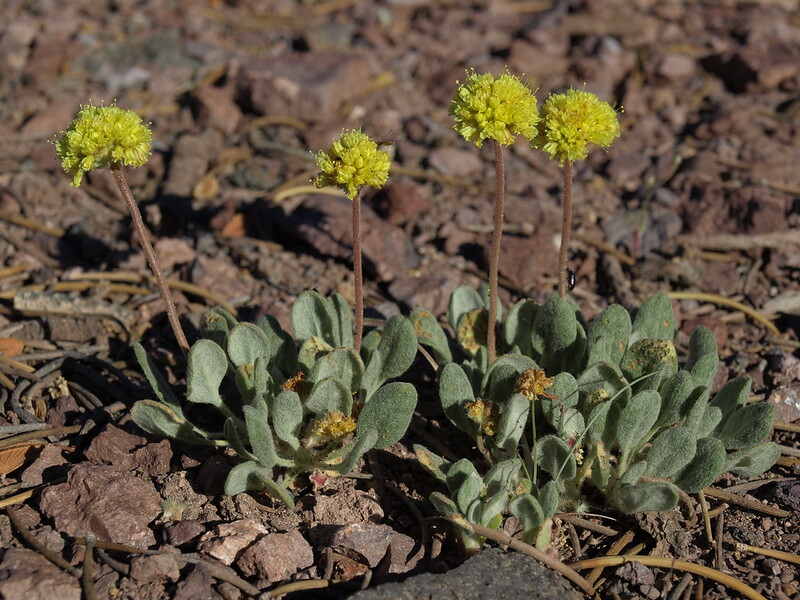
Photo Credit: Jim Morefield / Flickr / CC BY-SA 2.0
If you want beautiful flowers that need little care, consider native plants. These plants grow naturally in Los Angeles, which means they are well-suited to the local climate and soil conditions. There are many kinds of native plants out there, so make sure you choose the ones that fit your needs and preferences.
Advantages of choosing native plants:
- Less watering, which saves time and money
- Little to no chemical treatments
- They attract beneficial wildlife such as pollinators and birds
Examples of the best Los Angeles native plants:
- Buckwheat (Eriogonum)
- Sage (Salvia)
- California fuchsia (Epilobium canum)
- California lilac (Ceanothus)
- Flannel bush (Ferontodendron californicum)
Estimated cost: The cost of adding native plants to your yard depends on the plant’s type and size. Roughly, you can expect to pay $1,000 to $3,000 for a flower bed and $25 to $60 per shrub. Large shrubs can cost as much as $350. Trees typically cost $150 to $1,850 per tree but can cost as much as $3,335.
2. Save Time With Perennial Plants
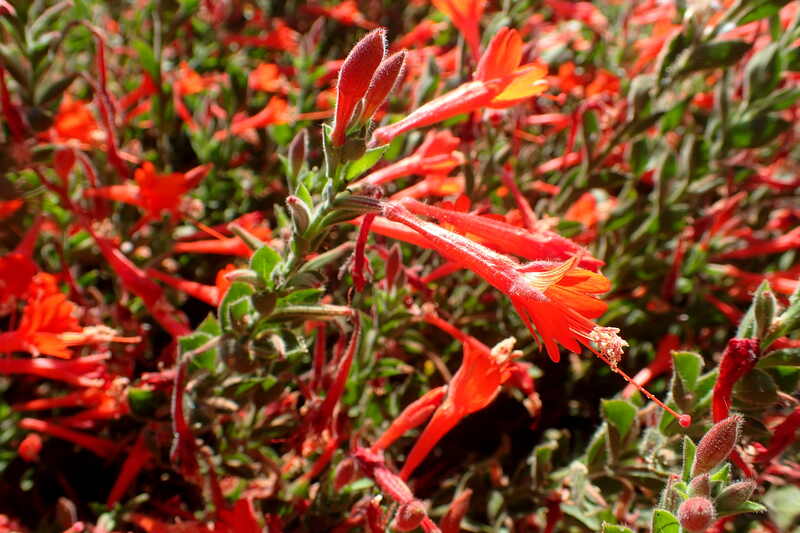
Photo Credit: Kenraiz / Wikimedia Commons / CC BY-SA 4.0
What’s the difference between annual and perennial plants? Annuals live for one growing season, whereas perennials come back year after year with proper care. They don’t need to be replaced every year and can even last for decades.
If you want the lowest-maintenance perennial, get a shrub or a tree. You can also plant smaller perennials, but they usually need more care.
But keep in mind that perennials tend to take longer to bloom and have shorter blooming seasons than annuals. When they’re in bloom, their blossoms are usually less vibrant. They also tend to be more expensive. So if you’ve got a bit of time for yard care or want to hire a lawn care pro, a good option is to get a mix of perennials and annuals.
Advantages of adding perennial plants:
- Perennials come back after winter, so you can save time and money on replacing them
- Some species can last for decades
Examples of perennial plants:
- California fuchsia (Epilobium canum)
- California lilac (Ceanothus)
- Flannel bush (Ferontodendron californicum)
- Toyon (Heteromeles arbutifolia)
- Beardtongue (Penstemon)
Estimated cost: Once again, the cost of adding perennial Los Angeles plants to your lawn will depend on various factors. Some of these factors include the plant type and size, and whether you plant them yourself or hire a pro.
But here are some rough figures. If you plant them yourself, your plants should cost around $2.50 to $60 per plant. However, they can cost over $100, depending on their size and type. Shrubs usually cost between $25 and $60 per shrub, but large shrubs can cost as much as $350. Trees are more expensive. They typically cost between $150 and $1,850 per tree but can cost as much as $3,335.
3. Save Water With Succulents
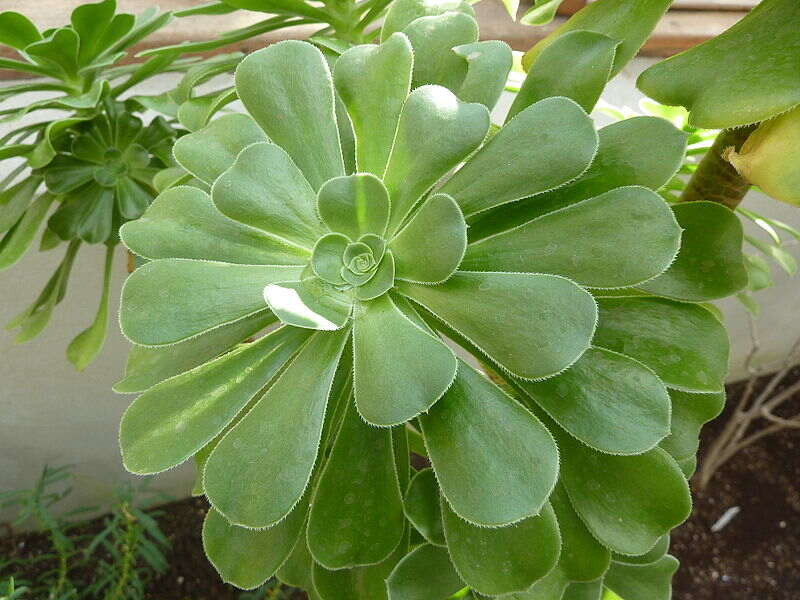
Photo Credit: Magnus Manske / Wikimedia Commons / CC BY-SA 3.0
Succulents are low-maintenance plants that are popular in Southern California and beyond. They do well in the warmest parts of Los Angeles. Planting succulents in your garden save money on water bills and helps conserve water.
Some succulents only thrive in climates that never reach low temperatures.Minimum temperatures in Los Angeles County range between 0 and 40 degrees Fahrenheit. Every Los Angeles area has a different hardiness zone, which is the minimum temperature it reaches each year. Check your area’s minimum temperature here.
Advantages of succulents:
- Less watering, which saves time and money
- Less maintenance
- Unique look
- Variety
Examples of succulents:
| Type of Succulent | Minimum Temperature |
| Supervivum | -30 degrees Fahrenheit and above |
| Aeonium | 30 to 50 degrees Fahrenheit |
| Coastal prickly pear (native) | 25 to 50 degrees Fahrenheit |
| The jade plant | 30 to 50 degrees Fahrenheit |
Estimated cost: There are many kinds of succulents out there. Depending on the type and size, their prices usually range from $5 to $100 per plant.
4. Add Versatility With Potted Plants
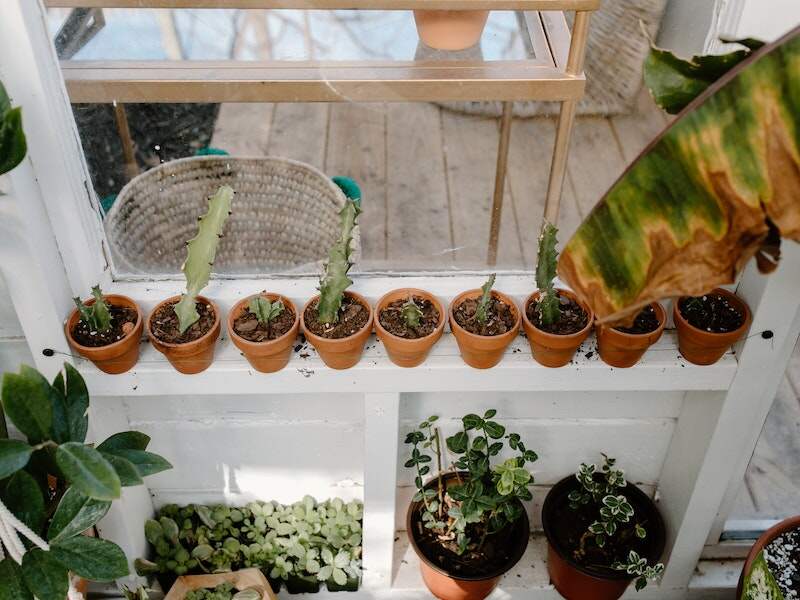
Photo Credit: Pxhere
Potted plants are a versatile option that can complete your landscaping project. You can pick from various designs and place them anywhere you want. Moreover, they need less maintenance than in-ground plants, so they’re an easy solution to add an elegant touch to your garden.
Advantages of potted plants:
- Less maintenance
- More versatility
- Variety
Which plants can you pot? You can grow most plants in a pot as long as you care for them properly. Make sure that you choose the right pot and soil and that you learn about your plants’ needs.
Estimated cost: As mentioned above, your budget for your new plants depends on a number of factors. But to give you some ballpark figures, the typical cost of plants is $2.50 to $60. However, they can cost up to $190, depending on their type and size. If you want a decorative pot, their prices usually range between $4 and $150.
5. Save Water With Mulch
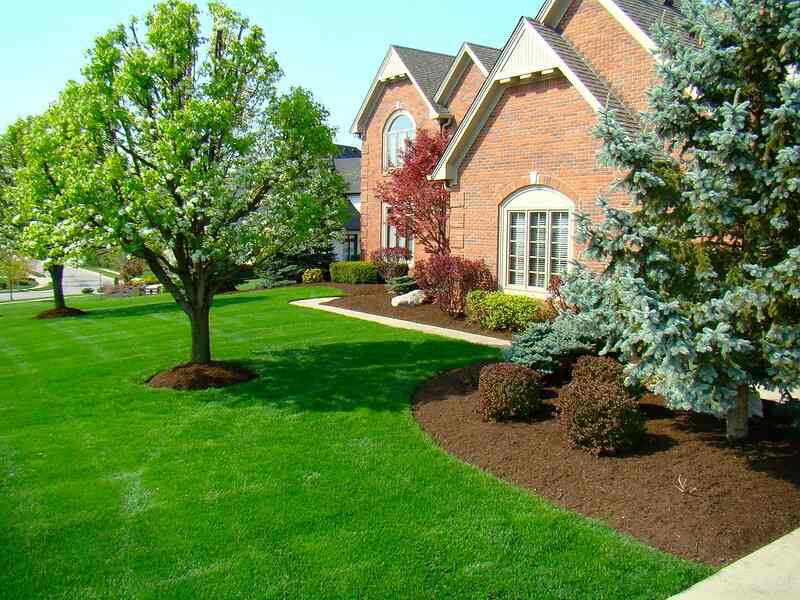
Photo Credit: Tom Britt / Flickr / CC BY 2.0
Mulching is excellent at conserving water and reducing weeds. It’s one of the easiest, cheapest ways to keep your garden healthy and hydrated.
You can choose between organic mulch and inorganic mulch. Organic mulch breaks down over time, adding nutrients to the soil. You’ll need to replace it every year. On the other hand, inorganic mulch doesn’t add any nutrients to the soil. However, it can last for several years without needing to be replaced, making it a low-maintenance option.
Advantages of mulch:
- Less watering, which saves time and money
- Suppresses weeds
- Aesthetically pleasing
Examples of organic mulch:
- Grain straw
- Wood shavings
- Tree leaves
- Grass clippings
Examples of inorganic mulch:
- Rubber mulch
- Crushed seashells
- Gravel
Estimated cost: Mulching typically costs around $85 per cubic yard.
6. Choose a Low-Maintenance Grass Type
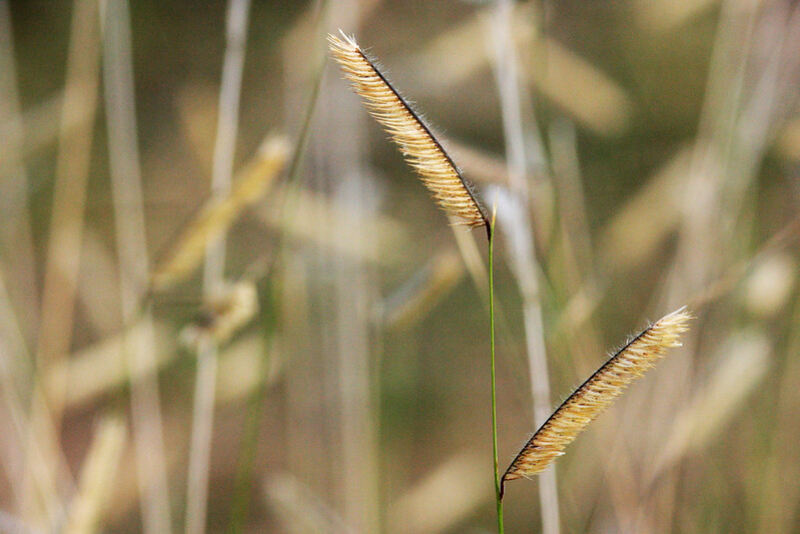
Photo Credit: Patrick Alexander / Flickr / CC0 1.0
Just like plants, there are grass types that thrive in the soil and climate of Los Angeles. Consider selecting a low-maintenance grass type to complement your low-maintenance plants. This can not only save you time and effort in lawn care but also money on water.
The advantages of low-maintenance grass types are obvious:
- Less watering, which saves time and money
- Also less mowing and overall lawn maintenance
Two examples of low-maintenance grass types include:
One more option is sand dune sedge, but take note that this grass grows in clumps and won’t create a uniform lawn appearance.
Estimated cost: Professional grass removal typically costs $1.50 per square foot. Professional lawn seeding typically costs between $0.10 and $0.19 per square foot.
7. Choose Ground Covers Instead of Grass
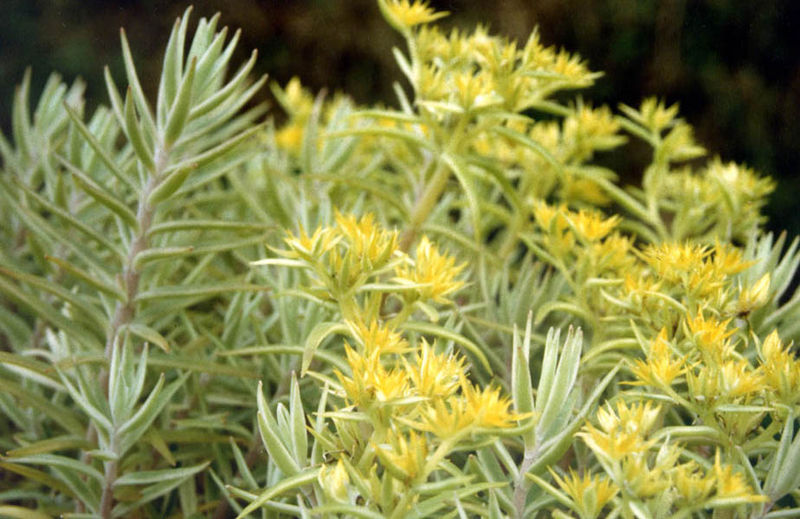
Photo Credit: Ghislain118 / Wikimedia Commons / CC BY-SA 3.0
If you want to go a step further, you can choose a low-maintenance ground cover instead of traditional turfgrass. Ground cover plants are short plants that can create the appearance of a dense lawn without needing as much maintenance.
Advantages of choosing ground cover over turfgrasses include:
- No lawn mowing
- Less risk of weeds and pests
- Less watering
- Some ground covers don’t need fertilizer
These ground cover plants should do well in your Los Angeles lawn:
- California fuchsia (Epilobium canum)
- Carpet sedum (Sedum lineare)
- Amethyst in Snow (Centaurea montana)
- Blue catmint (Nepeta x faassenii)
- Creeping thyme (Thymus praecox)
Estimated cost: On average, the cost of ground covers ranges from $10 to $25 per square foot without installation.
8. Save Water With Xeriscaping
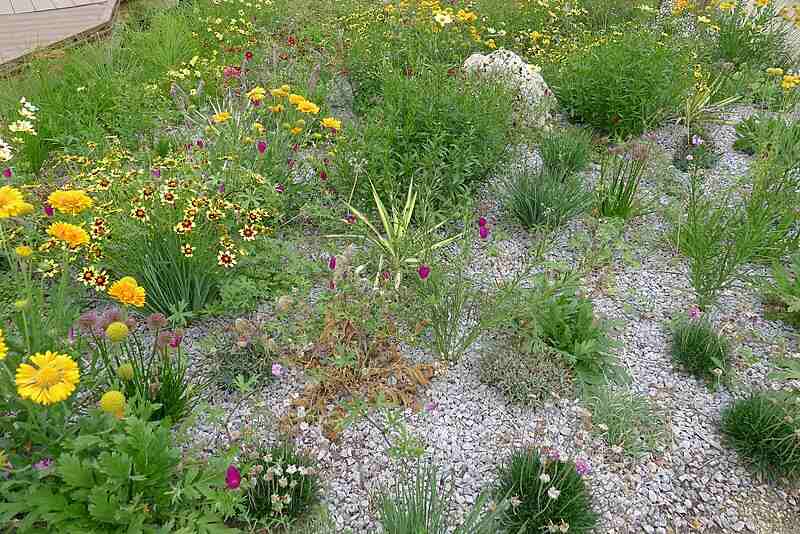
Photo Credit: James Steakley / Wikimedia Commons / CC BY-SA 4.0
Xeriscaping is a landscaping technique that focuses on reducing water usage. So if you want a low-maintenance garden that you won’t need to water much, xeriscaping is a great option for you.
The advantages of xeriscaping include:
- Less watering, which saves time and money
- Eco-friendly
You don’t have to xeriscape your entire lawn at once. You can start by taking small but impactful steps. As time goes on, you can gradually incorporate more xeriscaping techniques into your lawn.
Here’s how you can start xeriscaping today:
- Use as little turf grass as possible (you can replace it with ground covers)
- If you need to use turfgrass, choose a drought-tolerant grass type
- Learn to hydrazone, which means grouping plants together based on their water needs
- Plant only drought-resistant plants
- Use organic matter and mulch to help keep moisture in your soil
- If you need to use an irrigation system, install drip irrigation, sprinklers with a rain sensor, or another efficient type
- Use hardscapes to take up some of your lawn space
Estimated cost: The average cost of xeriscaping ranges between $5 and $20 per square foot.
9. Let Hardscapes Take Up Some of the Space
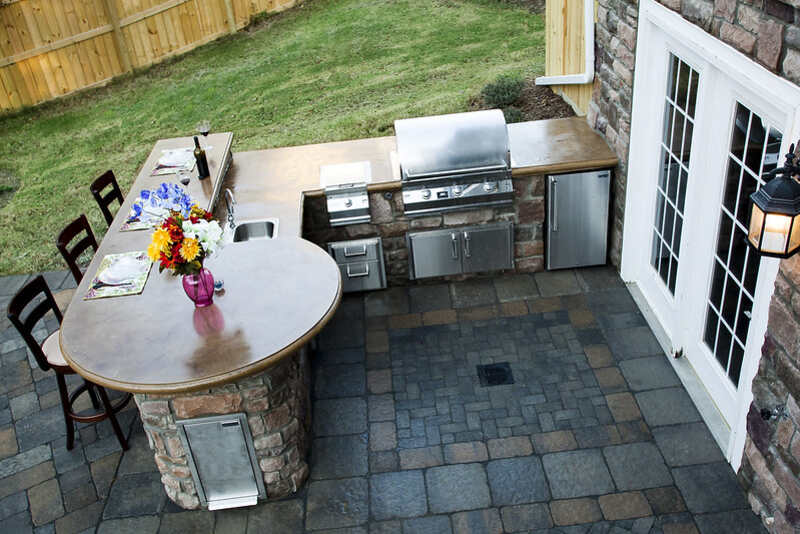
Photo Credit: Interlocking Concrete Pavement Institute / Flickr / CC BY 2.0
Hardscaping is any non-living element on your lawn, whether it be rocks, furniture, or a patio. By adding a few hardscapes to your landscape design, you can make it more functional and appealing while also making it easier to take care of.
There are many features you can add to your yard to create a low-maintenance, efficient outdoor living space. Some hardscapes, like fences and rock gardens, can even be made into a fun DIY project if you have the skills, tools, and time. If not, you can consider hiring one of WikiLawn’s landscaping pros.
The advantages of hardscaping include:
- Less watering, which saves time and money
- Also less mowing and overall lawn maintenance
- Better curb appeal
- Can increase your home value
- Can make your lawn more functional
- Can increase privacy
Examples of common hardscapes include:
- Decks
- Patios
- Gazebos
- Outdoor kitchens
- Fire pits
- Walkways
- Water features
- Fences
- Rock gardens
Estimated cost: There are many types of hardscaping projects, and their costs vary. Roughly, a new patio costs $2,200 to $6,500; a new deck costs $3,900 to $10,500; a new fire pit costs $250 to $2,200; a new pergola costs $2,100 to $6,000; a water feature installation can cost $1,100 to $7,500; river rocks cost $60 to $170 per ton; and stone paver projects cost between $3 and $30 per square foot, depending on the type of stone.
Final Thoughts
As you can see, there are various things homeowners can do to make lawn care easier. But even adding a few native, drought-tolerant plants can go a long way. Just make sure you do your research because plants all have advantages and drawbacks. Some plants are also toxic, so it’s important to be aware of any potential hazards before planting.
But let’s face it: even a low-maintenance lawn requires some level of upkeep. If you’d prefer to enjoy more of your free time without worrying about lawn care, consider hiring one of WikiLawn’s Los Angeles lawn care pros.
Main Image Credit: Paolo Gamba / Flickr / CC BY 2.0